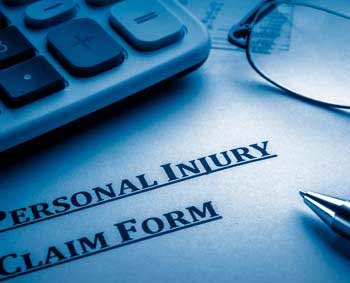Personal Injury Trials


There are almost as many different kinds of personal injury cases as there are ways to get injured. From a car accident to a slip and fall, and from injuries caused by defective products to medical malpractice, personal injury law covers a broad range of incidents. It is important to know that no two personal injury cases will work in the same way, and most cases are resolved with a settlement. This means if you are injured and pursue a lawsuit, there is a good chance you will never actually go to trial.
But if the party you are currently suing refuses to provide fair/proper compensation for your injuries, then you must be prepared for a trial. The majority of personal injury trials take between two days and two weeks to finish. The volume and quality of supporting evidence for your case – and the knowledge and abilities of your legal counsel – will affect how long you will be in court for your trial.
The first step in the trial process is the selection of a jury. During this first stage of the trial the judge, your lawyer, and the attorney hired by the defense will question a group of potential jurors. Both attorneys are doing their best to choose jurors that can relate to their side of the story, and who they believe will be understanding of their side, their arguments. A good personal injury attorney with trial experience is skilled at choosing jurors who are more likely to side in your favor.
The second stage of the trial is the opening statements. The opening statements period is the first opportunity you get to make a good first impression to the jury panel. And just like meeting someone for the first time, first impressions are important. The defense attorney also gets a chance to give their opening statement to the jury. The opening statements are just a preview of each side, during which they relay the highlights of their case. They give the jurors an idea of what is to occur throughout the remainder of the trial – what the jury can expect to hear. If you are the injured party, your attorney will give a summary of why the defense is responsible for your damages, and why the jury needs to grant you compensation.
After opening statements are made by both sides, the next step is the presentation of evidence. At this time, your personal injury attorney will go into detail on evidence that portrays the other party as negligent and/or responsible for your injuries. They may be directly or indirectly responsible. Injury attorneys identify and then use every detail that contributes to his or her arguments. Also during this stage of the trial, your attorney will call witnesses to testify, which furthers the argument that the defendant was fully or partially responsible. A cross-examination from the defense will follow, so the plaintiff’s witnesses are chosen carefully. Rest assured, defense attorneys will dissect every statement and do their best to trip up the witnesses during testimony or discredit their story.
The closing argument is the fourth stage of the trial. Closing arguments are an opportunity for both parties to present their final words in a convincing manner and summarize the evidence that was presented. These final words are very important to tip the balance for many jury members who may not have made a decision up to that point. This is the final chance your injury lawyer has to confirm why the defendant is responsible for your injuries and convince the jury that compensation should be awarded.
The fifth and final step of the injury trial process is the jury’s deliberation and verdict. After hearing both parties and viewing the evidence associated with each side, the jury must make a decision. If the jury’s final decision is in your favor, the jury must award you damages. Juries sometimes deliberate just an hour, but sometimes it can take a full day or more until they reach a verdict. Remember, your trial attorney can and should prepare you for this process should you be involved in an injury case, and can explain just how the injury trial will unfold.




